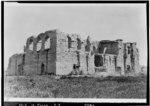Desert Laboratory

The Desert Laboratory is a historic biological research facility atop Tumamoc Hill (O'odham: Cemamagĭ Doʼag) at 1675 West Anklam Road in Tucson, Arizona. It was founded by the Carnegie Institution in 1903 to study how plants survive and thrive in the heat and aridity of deserts, and was the first such privately funded effort in the nation. Beginning in 1906, numerous long term ecological observation areas were set up by Volney Spalding & Forrest Shreve on the 860 acres (3.5 km2) scientific domain of Tumamoc Hill. Nine of these are the world's oldest permanent ecology study quadrats. The facility and staff were key contributors to what is now considered the science of ecology, including participating in the creation of the Ecological Society of America in 1915 and the Ecology journal. Led by Spalding & Shreve, they also contributed innovations in conservation. Part of it was declared a National Historic Landmark in 1965. The rest was added in 1987.
Excerpt from the Wikipedia article Desert Laboratory (License: CC BY-SA 3.0, Authors, Images).Desert Laboratory
West Anklam Road, Tucson
Geographical coordinates (GPS) Address Nearby Places Show on map
Geographical coordinates (GPS)
| Latitude | Longitude |
|---|---|
| N 32.225277777778 ° | E -111.0025 ° |
Address
West Anklam Road 1688
85745 Tucson
Arizona, United States
Open on Google Maps






